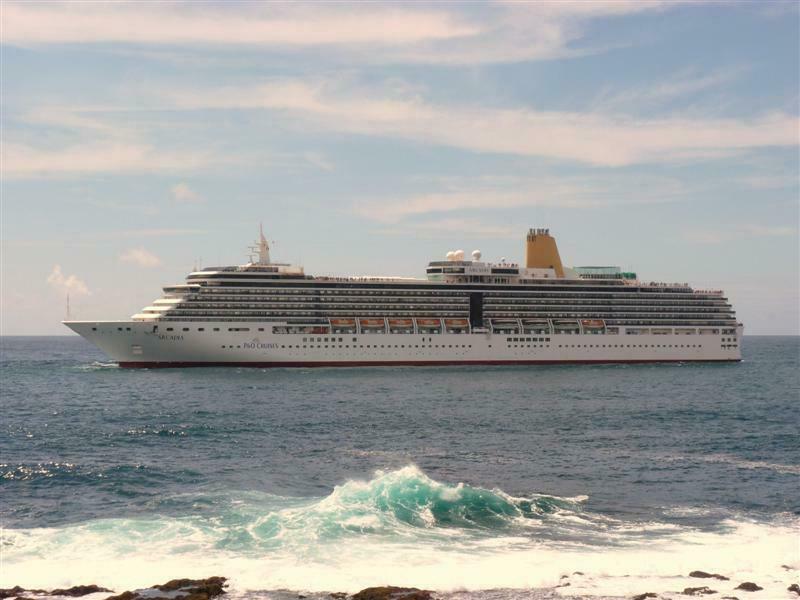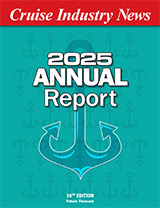 While earnings guidance for 2013 is upbeat from Carnival Corporation, Royal Caribbean Cruises and Norwegian Cruise Line, Europe is the swing factor. Carnival said on its year-end earnings call that it expects higher yields in North America and lower yields in Europe. The U.S. and the Caribbean are expected to be the main drivers for Royal Caribbean.
While earnings guidance for 2013 is upbeat from Carnival Corporation, Royal Caribbean Cruises and Norwegian Cruise Line, Europe is the swing factor. Carnival said on its year-end earnings call that it expects higher yields in North America and lower yields in Europe. The U.S. and the Caribbean are expected to be the main drivers for Royal Caribbean.
“We are starting to see the effect of a weaker economy in both Germany and the UK, which we did not see a whole lot of in 2012,” said Micky Arison, CEO and chairman of Carnival. “Although the brands are performing well, we are a little bit concerned that the booking curve has tightened.”
Richard Fain, CEO of Royal Caribbean Cruises, said on his company’s February earnings call: “We are happy with the strong bookings we are seeing in the U.S., but we are unhappy with the weakness we are seeing in many of the European Union countries, most notably Spain and the UK, but mostly it is the weakness in Southern Europe.”
At Norwegian, Kevin Sheehan, CEO, said that it was too early to predict Europe but that the company had gotten through the early part of the (winter) season well. “We are feeling pretty good about the summer,” he said.
Carnival’s December guidance for 2013 was for earnings per share in the range from $2.20 to $2.40, compared to actual earnings of $1.67 for 2012 and $2.43 for 2011. Last year’s earnings suffered from the Concordia incident, as well as austerity measures in certain countries and the continued weakness of the Spanish market.
Royal Caribbean’s guidance is from $2.30 to $2.50, compared to actual earnings of $0.08 last year, driven down by a write-down of Pullmantur, and $2.77 for 2011.
Norwegian’s guidance is from $1.20 to $1.40, compared to $0.94 last year and $0.71 the year before.
Carnival took an earnings hit in 2012, posting net income of $1.3 billion on revenues of $15.4 billion compared to net income of $1.9 billion on revenues of $15.8 billion for 2011. The results were attributed to the Costa Concordia incident, as well as higher fuel prices and currency exchange rates. Carnival also took a $173 million write-down of goodwill and trademark value for Iberocruceros.
Royal Caribbean took an even bigger hit from the non-cash $414 million write down of Pullmantur, citing the Spanish government’s austerity measures and further market deterioration in Spain. Royal posted net income of $18.3 million on revenues of $7.7 billion, compared to net income of $697.4 million on revenues of $7.5 billion for 2011.
Breaking down the numbers, at the bottom line, it is Carnival that is posting the highest net income per passenger day of $17.09, followed by Norwegian, with $16.31 and Royal with $0.52, although Royal would have posted $11.47, excluding its write-down of Pullmantur.
Royal Caribbean, however, has the highest net revenue at $166.80 per passenger day although Carnival commands slightly higher net ticket prices and Norwegian significantly higher onboard spend. Norwegian also posts the lowest net operating costs.
Norwegian posted high net income despite its relatively higher non-operating (financial) costs at 8.3 percent of revenues, compared to 5.0 percent for Royal Caribbean and 2.2 percent for Carnival.
>> Also in this section: Norwegian Goes Public, Berth Cost History and more
Excerpt from Cruise Industry News Quarterly Magazine: Spring 2013



